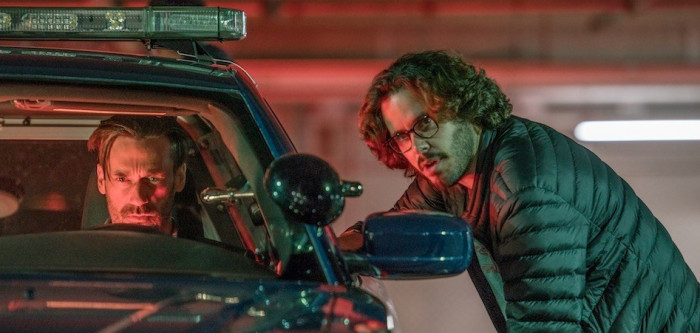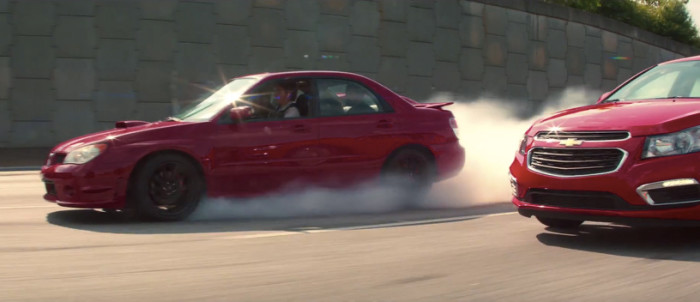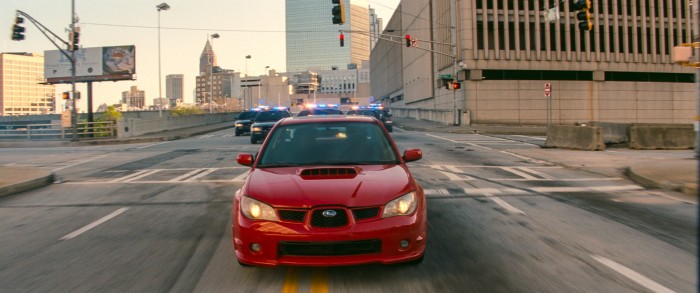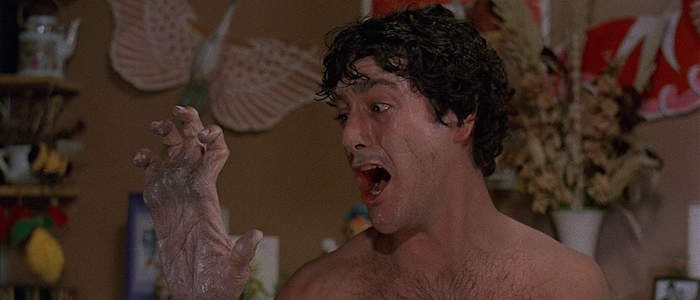Edgar Wright On The Origins Of 'Baby Driver' And Setting Car Chases To A Pop Soundtrack [Interview]
The junket scene was not built for Edgar Wright. How do you have a proper conversation with the director of Shaun of the Dead, Hot Fuzz, Scott Pilgrim vs. the World, and The World's End in just a few minutes? You can't. He's too much of a raconteur, has too much to say, and you only get a few questions before the publicist pops his head in and tells you that time is up.
I sat down to talk to Wright about Baby Driver, but I ended up mostly listening to Wright talk about Baby Driver. But that's okay! It may even be the best case scenario. Our almost entirely one-sided conversation was full of great information about how he made his spectacular, music-driven car chase movie, the film's earliest origins, and his favorite cinematic "needle drops."
It turns out that that the earliest seeds for Baby Driver were planted a long time ago, before Shaun of the Dead and after Wright's little-seen debut, A Fistful of Fingers:
I think it came from literally visualizing the action while listening to songs. It really all started when I was 21 and I had done my first movie, but I was living in London, completely broke. Even though I had made a movie, I certainly wasn't calling myself a film director at that point [laughs]. It took a long time. I think it was after I had done Shaun of the Dead that I actually uttered "Oh, I'm a director." Really, I would listen to music and I would visualize the action. So it's like dreams and visualizations of action came before the idea for the character. I knew it was a car chase movie. I would literally listen to "Bellbottoms" by the Jon Spencer Blues Explosion and visualize this car chase and be able to visualize: "So the first half of this section, they're all pulling up. On these guitar stabs, you cut around the gang and they get out and go inside. And now he's on his own and he starts singing along with the song. And then they come back and it's building up to the song really kicking into gear and then they drive off." This is stuff I was thinking about way before Spaced, way before Shaun of the Dead. Over the years, I started to get the idea of a getaway driver who listens to music the whole time. I didn't start seriously working on it or writing it until 10 years ago.
Long before Baby Driver came into existence, Edgar Wright test drove the film's central concept with a music video for the band Mint Royale...a move that ended up benefitting the project in the long run:
I had done this music video that was like a dry run for the opening scene. It's funny. It's now become the story that the movie is an expansion of that music video, when in reality, that music video was me road testing the idea for the first scene. It only came about because, the night before I was supposed to hand in my first treatment for [music group] Mint Royale, I was like "What the fuck am I going to do? Maybe I'll go with this getaway driver idea!" And then I was mad at myself for doing it, because even though the music video turned out pretty good, I was like "Oh, why did I burn that idea on that video?" So I was annoyed at myself for doing that. Later, it actually became sort of a help, because the actor in the video, Noel Fielding, became much more famous after the video was made. So that video kept popping up again, virally, over the next 10 years. It eventually became something where, when I was pitching the film, I could say "I did this video which is sort of like in the right vein" so people could see it and get the right idea.
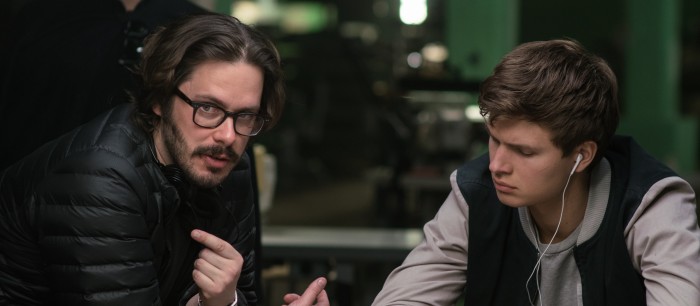 Baby Driver truly began to take shape after Wright made more movies with key sequences set to music, which made him wonder if that could be the driving force of an entire feature:
Baby Driver truly began to take shape after Wright made more movies with key sequences set to music, which made him wonder if that could be the driving force of an entire feature:
I finished the first draft of the script in 2011. After Hot Fuzz, I first told Working Title about the idea and Eric Fellner, to his credit, was always like "You should do that movie. Do your car movie." I didn't tell them what the plot was. I said it was a car chase movie driven by music. A car movie driven by music. I guess in that time, within things like Shaun of the Dead and Scott Pilgrim and The World's End, I had done more and more of these music-y set pieces, action set pieces that are set to music or have music performed in them. I always liked doing them, like the "Don't Stop Me Now" scene in Shaun of the Dead, where they're beating up the zombies to Queen. It's a joy to film that. With Baby Driver, I got the idea for the script and what the story is and who the character is and it's like "Can I do that for an entire movie?" Can that be the movie? It's entirely diegetic and the songs are playing in every scene, on some device of another, whether they're in his ears or on the stereo or in a store. That became the intention, of doing an entire movie that was set to music.
When it comes to car chases, Wright credits his crew for making them work, citing their extensive history with vehicular mayhem on screen:
I had done some car stuff before, but nothing to this extent. I had an amazing team. Darrin Prescott, the second unit director, and Bill Pope, my director of photographer, and people on the stunt team, like Jeremy Fry and Robert Nagle. Between those guys, you have people who have worked on the Matrix Reloaded chase and the Bourne Supremacy chase and the work from Drive and the work from John Wick and Mission: Impossible and The Fast and the Furious. It was great to have heads of department who have done a lot of sequences like this. Working with them and adding the extra twist so it's not like other car chase movies, is "We've got to set these things to music."
Although timing action scenes to music sounds tricky, Wright says that extensive planning and animatics helped the process along...and saved them money:
We did that with animatics, always thinking about sections. You take a song and break it up. "This section is from here to here in this song and this section is from here to here in this song. We've got to hit this anchor point and this is a hero moment." When he comes around the corner and there are six police cars behind him, that's this part of the song and nothing else. And then you have to work backwards. You've got the bit when he first takes off and that's sort of like a minute in the song and you've got to hit these other points in-between. You're not hemming people in, because it forces everyone to sort of think about it in a more mathematical way. This is also something that saves money budget-wise, and I would hope the movie looks like it costs more than it actually did. Because we're setting it to the songs, there's zero fat. We're not shooting things with 14 cameras and we know what the specific stunts are, because the song isn't going to get any longer.
However, there was one scene that ran longer than the song, forcing an adjustment that ended up being one of the biggest laughs in the entire movie:
That said, there is one bit in the movie, in the second car chase, where the action outran the song. I added an extra bit where the song runs out and Ansel Elgort has to carjack a new car from a young mother and he rewinds the song a little bit and starts playing it again. Bill Pope was the first to spot this. Bill Pope looked at the animatic and said "The action is too long for the song. You're going to want to spend longer on these stunts than you've given them in the animatic." And I was like "Eh, it'll be fine!" But then I watched it and he was right. I didn't want to have a new song and I didn't want it to be in silence, because that didn't make sense with the character, so what if Baby had planned a much quicker escape, but there had been complications? They'd been stopped twice, three times, in fact, by security guards and members of the public. Because those things have happened and his plan of escape has been ruined, he's trying to get back on track by rewinding the song to the start of the final verse and the final chorus. A lot of to-the-millisecond planning goes into it and you get these happy accidents. It also speaks to the character. At that point, when he's rewinding the song, he's trying to get back in control again.
When I asked Wright to share his favorite musical "needle drop" in a movie as part of our /Answers series, he decided to go with John Landis' comedy/horror classic, An American Werewolf in London:
Off the top of my head, my favorite needle drop, and I think it's magical, is the cut to the end credits of An American Werewolf in London. Every time I watch that movie, I just think it's the perfect, perfect ending. I don't know how to talk about it without ruining it for someone who has never seen it. It's such a tragic, heartbreaking ending and then a cut to black and the most upbeat, doo-wop version of "Blue Moon" by The Marcels. I remember the first time I saw it, it gave me such a rush and goosebumps. And it still does. I think it's the greatest cut-to-black credits song ever. It sort of sums up the mischief of the movie. There's real alchemy in that movie. It somehow manages to do everything. It's funny and scary and heart-wrenching at the same time. In terms of the first time, a film where I really connected the idea of using pop music as counter-scoring, it's An American Werewolf in London. By far.
Wright went on to explain that he created his own audio cassette soundtrack for the film back in the day...which includes a vocal cameo from one of the film's stars:
There was no soundtrack for An American Werewolf in London. There is no soundtrack album for that movie, bizarrely. There was some weird disco EP by Meco, Meco's interpretations of An American Werewolf in London. Amazingly, for one of the best soundtrack films, there is no soundtrack for An American Werewolf in London. I used to tape off a VCR onto audio cassettes. Somewhere, I still have a tape where I recorded songs off An American Werewolf in London, so it has the hiss of the VHS, but also at the start of that Marcels' needle drop of "Blue Moon" coming in on the credits...I can tell you what Jenny Agutter's little whimpers are leading up to that, because she's crying just before the song. It's literally her going... [imitates Jenny Agutter crying]. And then cut to the song! When I taped it off the VCR, it had Jenny Agutter's little whimpers in front!
Baby Driver is in theaters today. If you like movies, you should find time to see it.

